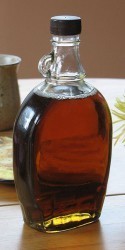Marc Abrahams's Blog, page 566
June 20, 2012
Men’s far infrared magnetic underwear
Men’s far infrared magnetic underwear would make a perfect gift for men who have everything except men’s far infrared magnetic underwear. One source is Alibaba.com, whose web site offers the following description. The specifications are delightful to read aloud:
Men’s far infrared magnetic underwear (A new healthy life starts)
Specifications
Men’s far infrared magnetic underwear
1) Promote Microcirculation on Hypogastrium
2) Bacteriostasis
3) Remove odour
Men’s far infrared magnetic underwear
The health panties is woven of 95% cotton and 5% spandex with far infrared & negative ion coating, is enchased 5pcs (1000gauss) permanent magnets according to the important points of belly. It can directly act on the channels and collaterals of the belly, improve the microcirculation, promote the blood circulation, prevent and cure the diseases caused by micro circulatory disturbance, increase immunity. It also can invigorate the blood to remove bloodstasis, dredge the meridian. It has the obvious curative effect for lumbago, abdominal distention, astriction, prostatitis, urinary frequency, haememorrhoids, sciatica, anus gelitik, odynuria,etc.
Pinciple [sic]: Far-Infrared & Nagative Ion
Indications:
1) Urinary frequency
2) Dysmenorrhea
3) Hemorrhoids
4) Endocrine disorders,
5) Gynecological diseases
Features & Function:
1) Promote Microcirculation on Hypogastrium
2) Bacteriostasis
3) Remove odour
4) Help to cure above disease
(Thanks to investigator Mary O’Grady Kroner for bringing this to our attention.)

Engineering analysis of “Nigerian scammers”
 Cormac Herley (pictured here) attempted an engineering analysis of some of the people who shared the 2005 Ig Nobel Prize for literature. (That prize was awarded to the Internet entrepreneurs of Nigeria, for creating and then using e-mail to distribute a bold series of short stories, thus introducing millions of readers to a cast of rich characters — General Sani Abacha, Mrs. Mariam Sanni Abacha, Barrister Jon A Mbeki Esq., and others — each of whom requires just a small amount of expense money so as to obtain access to the great wealth to which they are entitled and which they would like to share with the kind person who assists them.)
Cormac Herley (pictured here) attempted an engineering analysis of some of the people who shared the 2005 Ig Nobel Prize for literature. (That prize was awarded to the Internet entrepreneurs of Nigeria, for creating and then using e-mail to distribute a bold series of short stories, thus introducing millions of readers to a cast of rich characters — General Sani Abacha, Mrs. Mariam Sanni Abacha, Barrister Jon A Mbeki Esq., and others — each of whom requires just a small amount of expense money so as to obtain access to the great wealth to which they are entitled and which they would like to share with the kind person who assists them.)
Herley’s study, which you can download, is:
“Why do Nigerian Scammers Say They are from Nigeria?“, Cormac Herley, Proc. WEIS 2012. Herley is based at Microsoft Research.

June mini-AIR: foaming, defoaming, and not Wladimir
 The June issue of mini-AIR just went out. Topics include:
The June issue of mini-AIR just went out. Topics include:
Foam: Too Large for Lagrange
Hardisty Shares His Final Thoughts on Lampreys
and more
It also has this winning entry (by INVESTIGATOR DON HEITZMANN) for last month’s competition. which asked for a limerick to honor the study “Elastic Stiffness Coefficients for an Embedded Spudcan in Clay“:
Most users of spudcans, I’m thinking,
Just place ‘em, forget ‘em, go drinking,
Unless set on clay,
In which case you may,
Return, drunk, to find your rig sinking.
Mel [pictured here] says, “It’s swell.” (mini-AIR is the simplest way to keep informed about Improbable and Ig Nobel news and events. Just add yourself to the mini-AIR list, and mini-AIR will be emailed to you every month)

Magazine: “Randomness and Stupidity” Issue
 The special Randomness versus Stupidity issue (vol. 18, no. 3) of the magazine (the Annals of Improbable Research) is now online. It’s got lots about randomness and stupidity—and much more.
The special Randomness versus Stupidity issue (vol. 18, no. 3) of the magazine (the Annals of Improbable Research) is now online. It’s got lots about randomness and stupidity—and much more.
The pleasing-paper version was mailed to subscribers a short while ago. Click on the magazine cover (below) to download a free PDF, or buy a high-quality PDF. Or subscribe to the paper version. Mel (right) says it’s swell.

June 19, 2012
Why Do Birds Bob Their Head While Running? (Locomotion, part 2)
The question : ‘Why do some*(see note below) birds bob their heads when walking?’ has perplexed scientists for many years. Some researchers suggest that head-bobbing may be correlated with the morphology of the retina, but others propose that it’s mechanically linked to the locomotor system, and that its visual functions are secondarily adapted.
Either way, one of the most comprehensive studies of head bobbing was authored in 2010 by Jennifer Hancock, a doctoral student at the Biknevicius Lab of Ohio University, US, in partial fulfillment of the requirements for the degree Doctor of Philosophy. Hancock not only investigated the head-bobbing phenomenon per-se, but also correlated it with the kinetics and kinematics of terrestrial locomotion in the Elegant Crested Tinamous (Eudromia elegans). (see Terrestrial Avian Locomotion Investigations, part 1)
“These biodynamic studies found that birds have two distinct locomotor transitions. The first transition occurs as they move from vaulting mechanics to bouncing mechanics, and the second transition occurs when they incorporate an aerial phase during running. Thus, many birds use grounded running during intermediate speeds. Also, this study found in general that head and neck movements are coordinated with limb movements during terrestrial locomotion in charadriiform birds, but were not coordinated in the Elegant-crested Tinamou. Thus, the coordination is neither perfect nor obligatory.”
The Mechanics of Terrestrial Locomotion and the Function and Evolutionary History of Head-bobbing in Birds can be read in full via the link (194 page .pdf)
* Note: Many species of birds don’t head bob, for reasons which are, as yet, not fully understood.
“Head-bobbing is not ubiquitous among birds. Although species known to headbob represent only 21 (12.8%) families out of the approximately 187 families in the Class Aves (Dunlap and Mowrer, 1930; Daanje, 1951; Friedman, 1975; Dagg, 1977; Frost, 1978; Pratt, 1982; Davies and Green, 1988; Wohlschlager et al., 1993; Troje and Frost, 2000; Fujita 2002, 2003; Cronin et al., 2005), sampling across Aves is quite sporadic. Furthermore, non-head-bobbing species have been reported in 16 (8.6%) families, six of which also contain head-bobbers. For the remaining 153 (81.8%) of avian families, no data on head movements during locomotion have been reported.”

Tea — A perfectly filling beverage
Tea, when brewed and poured, is a liquid perfectly suited to filling otherwise empty space on a news site. It exactly fills whatever quantity and shape of space needs filling.
Here’s an example, from the BBC news web site. The headline, as you can see, says: “Male tea drinkers ‘at greater risk of prostate cancer‘”:
BONUS QUESTION: Which beverage is more filling: tea or coffee?

Special Ig Nobel show in Rotterdam — June 29
Come join us at a special Ig Nobel event in Rotterdam, The Netherlands, on Friday night, June 29, at the historic site of the incident that led to the first scientific report of homosexual necrophilia in the mallard duck.
Join founder and host of the Ig Nobel prize ceremony Marc Abrahams, for an in-depth look at the newest crop of Ig Nobel Prize winners. With special appearances by Dutch Ig Nobel prize winners and also a dead duck:
Kees Moeliker (homosexual necrophilia in ducks)
Ilja van Beest ( a rollercoaster ride cures asthma )
Bart Knols (malaria mosquitoes, Limburger cheese and smelly feet)
Pek van Andel ( images of human copulation in an MRI-scanner )
Date: Friday 29 June 2012
Time: 19:30h, doors open at 19:00h
Location: Natuurhistorisch Museum Rotterdam, Westzeedijk 345 (Museumpark)
Entrance: 5 euro at the door, including a beverage and peanuts afterwards
Reservations: please e-mail
VIPs: members (and qualified would-be members) of ‘The Luxuriant Flowing Hair Club for Scientists’ (LFHCfS ™) get in for free, and may take a bow to the audience.
Click here for info in Dutch.

June 18, 2012
The research that’s on everyone’s lips: Lip prints
They are on everyone’s lips always, and sometimes on a shred of evidence in a murder trial, and occasionally in the title of a scientific report. Lip prints have become the subject of formal study. That formal study has a formal name: cheiloscopy. Basic questions still nag at cheiloscopists.
A Portuguese population lip print patterns paper, Morphologic Patterns of Lip Prints in a Portuguese Population: A Preliminary Analysis, written by Virginia Costa and Ines Caldas of the University of Porto, in the Journal of Forensic Sciences, shows how scientists have worked hard to classify the universe of lip patterns into a set of standard categories. They slightly lament the existence of competing standards, the field being too new for its experts to settle on a single taxonomy.
They also worry at the how-do-the-lips-change-after-death conundrum….
So begins this week’s Improbable Research column in The Guardian.

When babies smell like food

Maple syrup bottle – image from Wikimedia Commons
Babies can smell like maple syrup, ripe cheese or even fish, rancid butter and several other things:
Fleisher GR, Ludwig S (eds). Textbook of Pediatric Emergency Medicine. Lippincott Williams & Wilkins; 6th edition, page 405, 2010
These babies and others that smell like food may have a serious inborn error of metabolism.
BONUS: For the hardcore

June 17, 2012
Groucho Running (Locomotion, part 1)
Please observe the unusual locomotive behaviour which begins at around 55 seconds into this video – when Groucho Marx starts to run.
Groucho is displaying a behaviour which scientists now call ‘Groucho Running’ *see note. But Groucho was by no means the first to develop this unusual gait. Take, for example the Tinamou. It also performs Groucho Running, and presumably has done so for many thousands of years. The trait has not remained under-investigated. A team from Ohio University, US, encouraged Tinamous to run or a treadmill whilst they were they were being filmed with a high speed camera. Subsequent evaluations of the video showed that :
“Kinetic energy and gravitational potential energy fluctuate in phase across speeds ranging from 0.6 –2.7 m/s, and external mechanical energy recovery by inverted pendulum mechanisms is poor (generally_15%). These results are consistent with bouncing mechanics typical of runs, although video records illustrate a lack of an aerial phase. This suggests that tinamous are “Groucho running,” a gait best described for humans in which high limb compliance limits the elevation of the center mass at midstance.“
The details of the experiment were published the Journal of Morphology, 260(3):297. See: “Groucho Running” in Tinamous. (Scroll to page page 24 in the .pdf)
* Note: As far as Improbable can discover, the term first appeared in the Journal of Applied Physiology, June 1, 1987.
Teaser: This video, where Groucho talks about pigeons, neatly dovetails into the next article in this series – but why? Find out soon …

Marc Abrahams's Blog
- Marc Abrahams's profile
- 14 followers

























